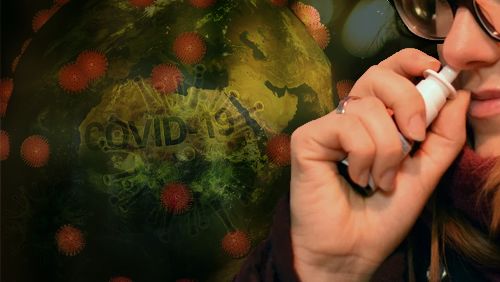It’s not a cure for the virus, but a new nasal spray could help keep COVID-19 from spreading. Researchers at the University of Washington (UW) have reportedly been able to figure out how to use synthetic proteins sprayed directly into the nostrils to stop the coronavirus in its tracks and help keep it from becoming another global nuisance. While there is still more work to be done to determine the full range of possibilities of the solution, it could prove to be a huge step forward in allowing the world to return to normal.
With the aid of computers, researchers were able to design proteins that have proven effective in protecting lab-grown human cells from the virus that causes COVID-19, SARS-CoV-2. They explain in a press release that the solution is able to prevent the coronavirus from using their “spike” proteins to latch onto and enter healthy cells. Without the spikes, the coronavirus can’t cause significant damage and can be eliminated much more easily.
The experiments to understand how to combat the virus began this past January, and researchers developed over two million spike killers throughout the project. Of those, only 118,000 made the final cut and were then tested in a lab environment. Says Longxing Cao, lead author of the report and a postdoctoral scholar at UW’s Institute for Protein Design, “Although extensive clinical testing is still needed, we believe the best of these computer-generated antivirals are quite promising. They appear to block SARS-CoV-2 infection at least as well as monoclonal antibodies, but are much easier to produce and far more stable, potentially eliminating the need for refrigeration.”
The project saw collaboration by the UW School of Medicine in Seattle, as well as the Washington University School of Medicine, located in St. Louis, Missouri. In addition, according to the press release, it was supported by “a Defense Advanced Research Projects Agency Synergistic Discovery and Design (contract HR0011835403), The Audacious Project at the Institute for Protein Design, funding from Eric and Wendy Schmidt through the Schmidt Futures Program, Open Philanthropy Project Improving Protein Design Fund, an Azure computing resource gift for COVID-19 research provided by Microsoft, the National Institute of General Medical Sciences (R01GM120553), the National Institute of Allergy and Infectious Diseases (HHSN272201700059C), Helen Hay Whitney Foundation postdoctoral fellowship, Pew Biomedical Scholars Award, an Investigators in the Pathogenesis of Infectious Disease Award from the Burroughs Wellcome Fund, Fast Grant award and the UW Arnold and Mabel Beckman cryo-EM center.”
